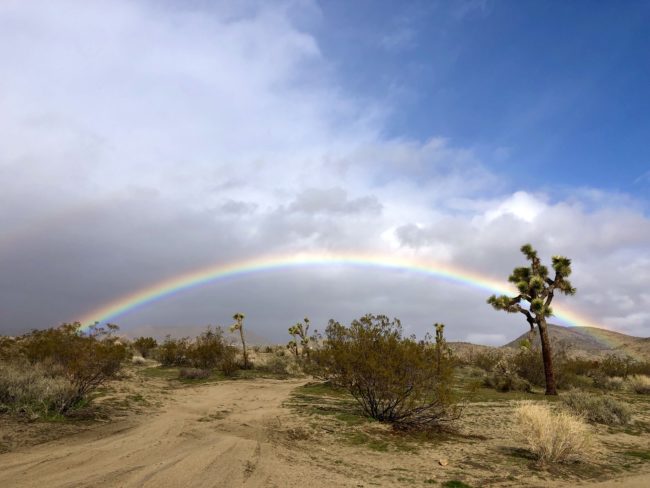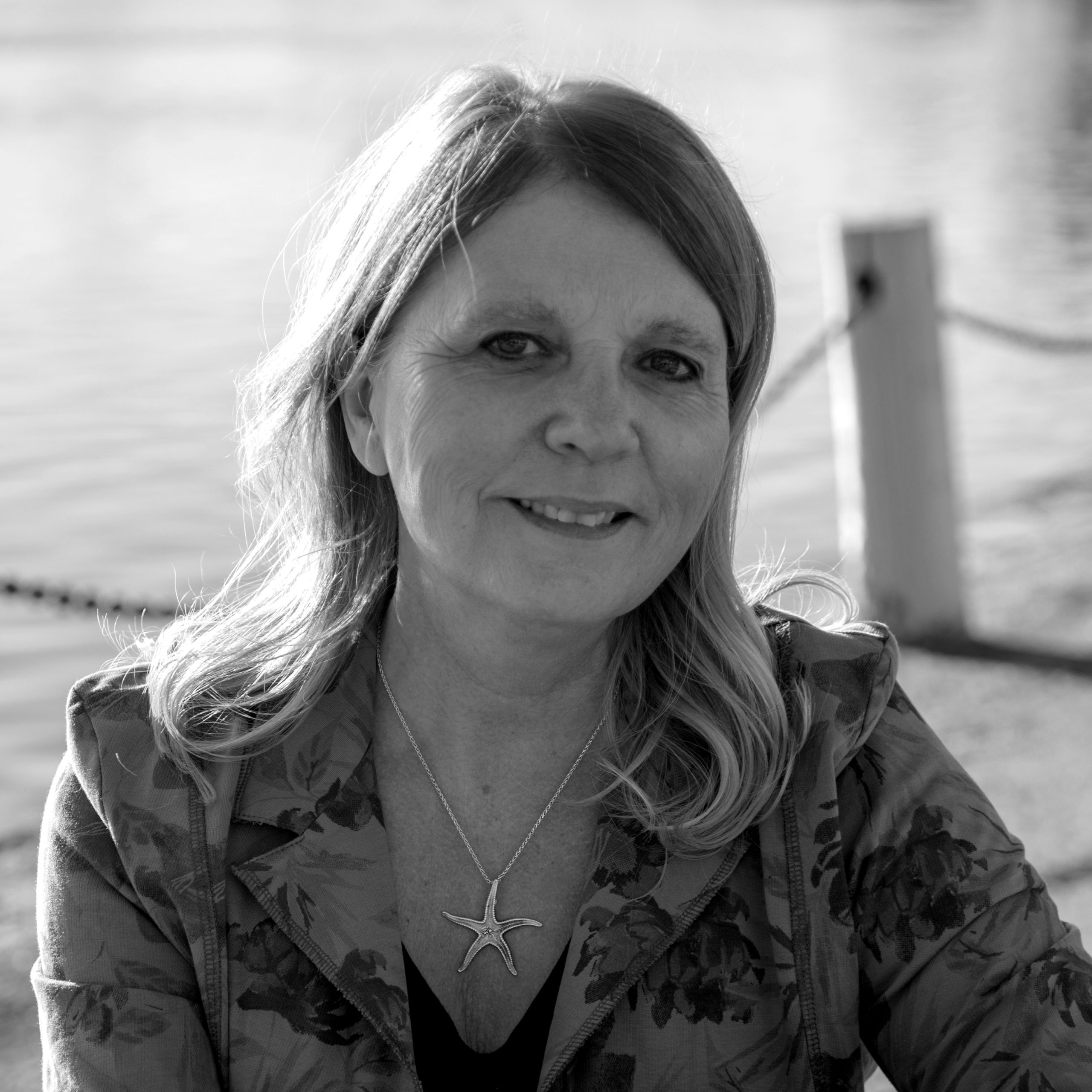As an eco-artist deeply concerned about humanity’s unsustainable growth, I use my art to shed light on our reckless misuse of the very systems that sustain us. To avert disaster, we must embrace a holistic perspective and recognize the interconnectedness of all systems. Over four years, I dedicated two weeks each winter to creating four installations in the Mojave Desert, using materials found on-site and minimal tools. The residency took place at Desert Dairy, once a dumpsite now cleaned up and transformed into an artist residency.
It was a few hours away from the Bay Area, where I lived at the time. I have been traveling much less these past years. I want to participate in programs not too far from where I live. I was recently offered to join an eco-artist residency program in Brazil, and I declined. Amid the ecological crisis, I am thinking a lot about a phrase artist Susan Smith said recently -she was quoting a lecturer-: “Think about the radical act of staying put.” I am not there yet, but I am working on it.
Creating the four installations was meditative, immersed in the mesmerizing vistas and ever-changing weather of Twentynine Palms’ Mojave Desert. During work, I often listened to thought-provoking podcasts like The Great Simplification with Nate Hagens.
I created the installations in synergy with the desert landscape, reflecting the chapters of our most recent civilization’s story that I am passionate about. Each installation explores a different aspect of our human predicament, symbolized by their titles: Exponential, Our House, Slow Down, and Limits.
The finite nature of our planet imposes limits on Exponential growth, posing a threat to the biosphere from the expanding human enterprise. The intricate system we have constructed to inhabit Our House renders it fragile and susceptible to simplification. It is imperative to Slow Down and adopt a mindset of reduced consumption, utilizing fewer resources and energy, if we hope to preserve a habitable planet. Embracing the reality of Limits and the bio-physical constraints of our planet is a crucial aspect of this necessary revolution.
Exponential (2020)
Exponential
Installation
Materials: coton thread, objects found on-site
Tools: glue gun, pliers, scissors, bucket, and broom.
Using small metal and plastic objects found on-site, I repurposed them to adorn a decaying dwelling that was once part of a dairy company. This installation, inspired by Jared Diamond’s Collapse, represents the threat of our exponential human enterprise to the delicate balance of our biosphere. The suspended objects, intertwined within a complex web of threads, evoke the fact that nothing should be considered separately from the whole. It is during that time that I learned more about Dana Meadow’s work on the importance of Thinking in Systems. I got a more precise idea about the poly-crises we face: ecology, economy, equity, and energy. Exponential urges us to reevaluate our consumption patterns and the relentless pursuit of constant growth. Through the weathered walls, viewers catch a glimpse of the world we must protect for the survival of humanity. It was shortly after my first stay at Desert Dairy artists residency that I contacted the MAHB with the desire to join a like-minded group of people and work with them.
It is at that time that Kyle, my husband, and I started to consider moving to a place where we could create a small art farm, grow a large garden, and foster creative community projects.
After 3 years, Exponential is decaying nicely. It’s slowly losing some of its elements. The part that was inside of the dwelling had to be undone because the small construction is being used again.
Our House (2021)
Our House
Installation
Materials: Thread, tamarisk sticks, found objects
Tools: pruner, scissors, pliers, metallic wire, wire cutter.
Constructed on a concrete slab within the Desert Dairy property where once stood a dwelling, Our House represents the fragile structure of our biosphere. Using branches from a nearby tamarisk grove, I meticulously fashioned a corridor-like structure with suspended objects found on-site. The installation’s delicate and intricate design symbolizes the fragility of our biosphere, reminding viewers that our house is nature itself. The expansive desert vistas serve as a backdrop, reinforcing our interconnectedness with the natural world. It is at that time that I completed the Think Resilience online course by Richard Heinberg, senior fellow at Post Carbon Institute. I was so inspired that I decided to start a new chapter of the What’s Next for Earth project based on the lessons of the course.
Today Our House is gone. It was the most fragile of the four installations, and a powerful desert wind storm destroyed it. I returned to Desert Dairy during one of my visits to the Mojave Desert and de-entangled the elements of the installations. I detached the objects and the wires and made a pile with the wooden sticks so that someone else could reuse them. That happened with artist Eileen Wold who used them for an installation piece in 2023.
Slow Down (2022)
Slow Down
Installation
Materials: small rocks found on-site
Tools: bucket, broom.
Created solely from small rocks found on-site, this installation invites viewers to reflect on the necessity of slowing down, appreciating the present moment, and embracing what we already have. The installation spans from the top of a small hill to its foot, with long lines drawn on the ground. Amidst the harsh conditions of the desert, Slow Down stands resolute, its smooth surface transformed by the gentle touch of seldom rainfall. In commemoration of the 50th anniversary of Limits to Growth in 2022, I found inspiration in listening to Dennis Meadows, one of the book’s authors, as he reflected on the persistent relevance of their warnings about a societal collapse in the face of unchecked exponential growth. Motivated by these insights, I embarked on the creation of various installations, including this one and Down to Earth.
Having spent time in the Mojave Desert often, I noticed with anger the exponential growth of solar farms. Renewable energy has, of course, to be part of the energy solution to transition away from fossil fuels. But what we see is the disintegration of precious and rich habitats. Even when we look for solutions, it seems that it goes the opposite way it should go for the biosphere. Slowing down is also about changing our habits so that we are not trying to keep everything the way they are (that’s business as usual, and that is driving us into the wall). We have to accept that there will be less energy in the future, and that’s good for the biosphere. But that also means we’ll have to make sacrifices.
Slow Down is still there today.
Limits (2023)
Limits
Installation
Materials: small rocks and rusted cans found on-site
Tools: a large rock to flatten the rusted cans, a wheelbarrow, and a bucket.
Limits, like Slow Down, is situated outside the Desert Dairy property and serves as a reminder to understand and accept the finite boundaries dictated by our planet’s bio-physical reality. Despite enduring fierce windstorms, the installation remains steadfast, albeit with minor changes and the loss of some rusted metal pieces. It stands as an enduring symbol of the limits that shape our existence. It is at that time that I discovered the podcast Planet Critical and I highly recommend it if, like me, you want to hear the truth.
It is not long before going to that artist residency that Kyle and I found a small piece of land in central Oregon that we now call home. When I finished the residency, I drove to Bend to start a new chapter of my life.
Limits withstood several powerful windstorms. It has lost some flattened pieces of rusted metals, but it remains mostly the same.
Reflections and Action
These delicate and transient installations, crafted using locally sourced materials, serve as poignant reflections on the ecological, economic, and energy crises that weigh heavily on our collective consciousness. While a sense of joy permeates my being during the creation of these installations, a profound concern for the state of our civilization and the future persists. Art provides solace and guides me through the depths of these intricate emotions. The invaluable feedback I receive from the few visitors who experience my installations in the desert fuels my passion. My perspective on my work has shifted, transcending mere career progression. Given the state of the world, there are more significant pursuits than competing for exhibition selection. My individual work holds personal importance and, hopefully, resonates with those who encounter it.
Moreover, I find fulfillment in engaging fellow artists, deepening their understanding of the breadth of our current challenges. It is vital for humanity to grasp the magnitude of our present predicament and respond with resolute action.
Hence, I am thrilled to serve as the Art Director at MAHB, overseeing the art page and advancing the What’s Next for Earth project. Also moving to Central Oregon to start a community project in the form of an art farm. Taking action is what keeps me grounded. The challenges we confront are of utmost importance, leaving no room for complacency.

Leaving the Mojave desert in late February 2023
and driving up to Central Oregon to start a new project.
 Michele Guieu is an interdisciplinary environmental artist and educator focusing on resilience amid the current human-induced climate crisis.
Michele Guieu is an interdisciplinary environmental artist and educator focusing on resilience amid the current human-induced climate crisis.
Michele initiated and curates the ongoing art project What’s Next for Earth, drawing inspiration from the Think Resilience course by Richard Heinberg of the Post Carbon Institute.
Furthermore, she actively participates in various initiatives, including co-hosting the Artists and Creatives Group alongside Christine Conklin, a part of the Deep Transformation Network developed by Jeremy Lent.
Michele serves as the Art Editor at the Millennium Alliance for Humanity and the Biosphere (MAHB).
Michele’s website.
What’s Next for Earth’s Art Project.
Deep Transformation Network – Artists and Creatives group.
This article is part of the MAHB Arts Community‘s “More About the Arts and the Anthropocene”. If you are an artist interested in sharing your thoughts and artwork, as it relates to the topic, please send a message to Michele Guieu – michele@mahbonline.org. Thank you. ~

